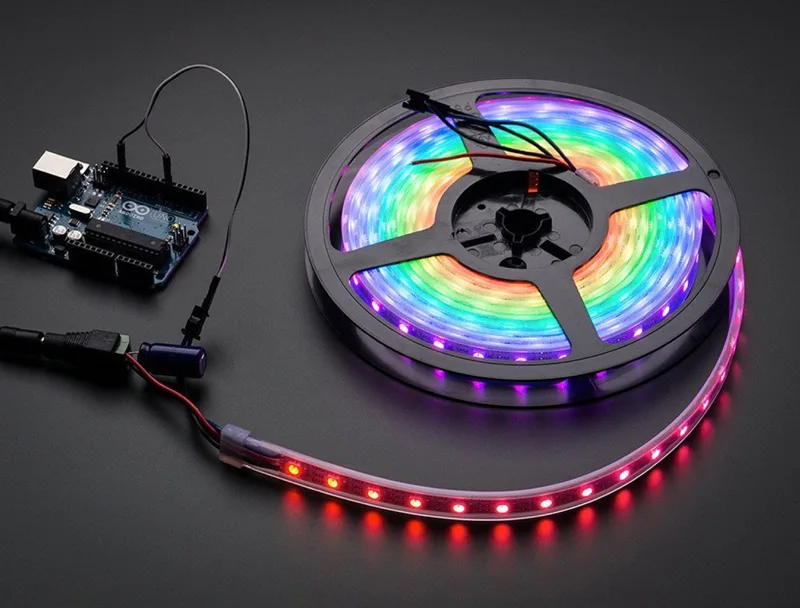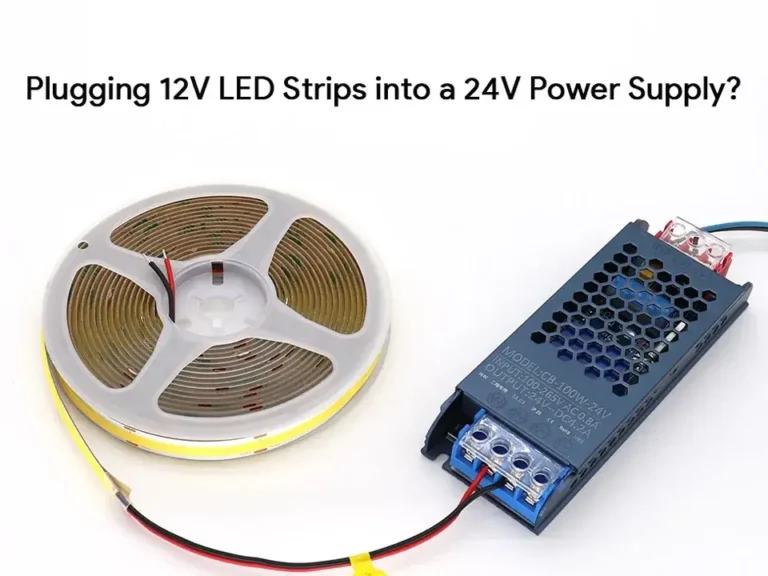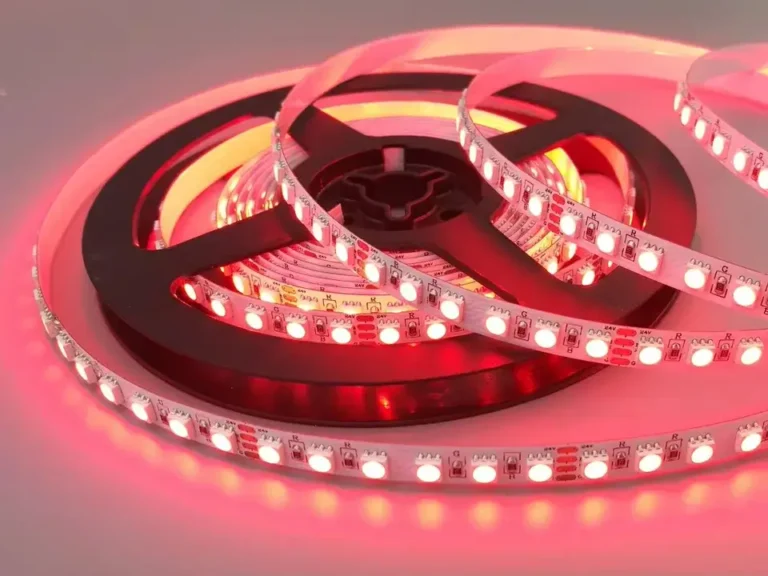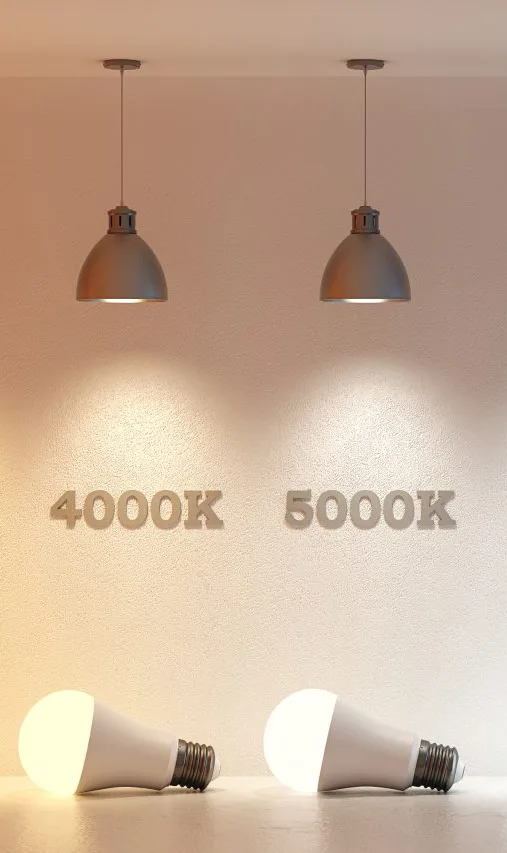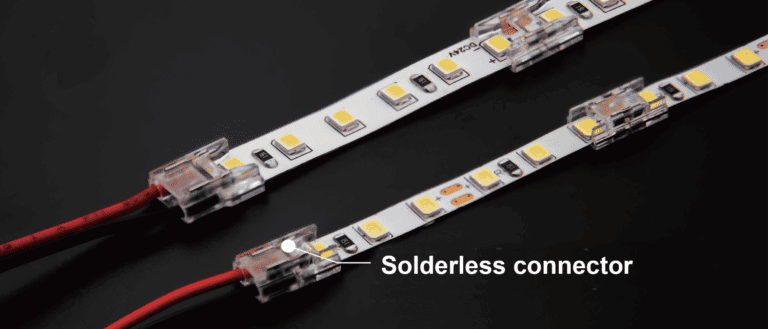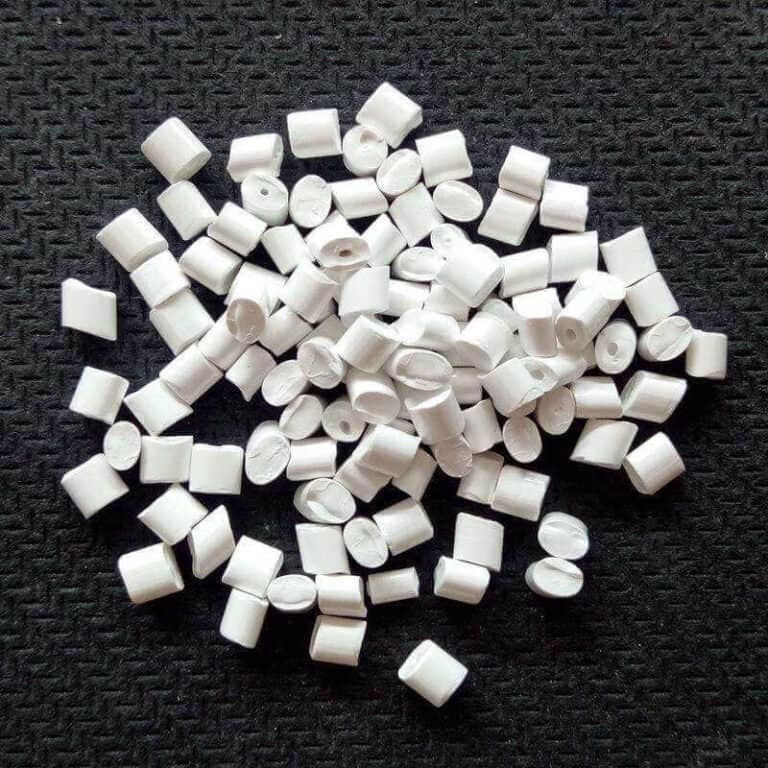LED strip lights are a flexible and versatile lighting product available in a variety of sizes, shapes, colors, and styles. Many LED light strips do not plug directly into 220V power and require electricity to convert and light. So, do you need to illuminate a space that doesn’t have an outlet? Whether it’s a cozy corner, an outdoor setting, or a creative DIY project, battery operated LED strip lights are a flexible and energy-efficient solution.
With LED strip lights becoming increasingly popular for DIY projects and portable lighting solutions, using battery power opens up many creative possibilities. Battery power offers flexibility and portability, making it ideal for projects that can’t be plugged into an outlet. In this article, we’ll take you through everything you need to know about powering LED strip lights with batteries, including battery selection, setup, optimization, and safety.
Why Use Batteries to Power LED Strip Lights?
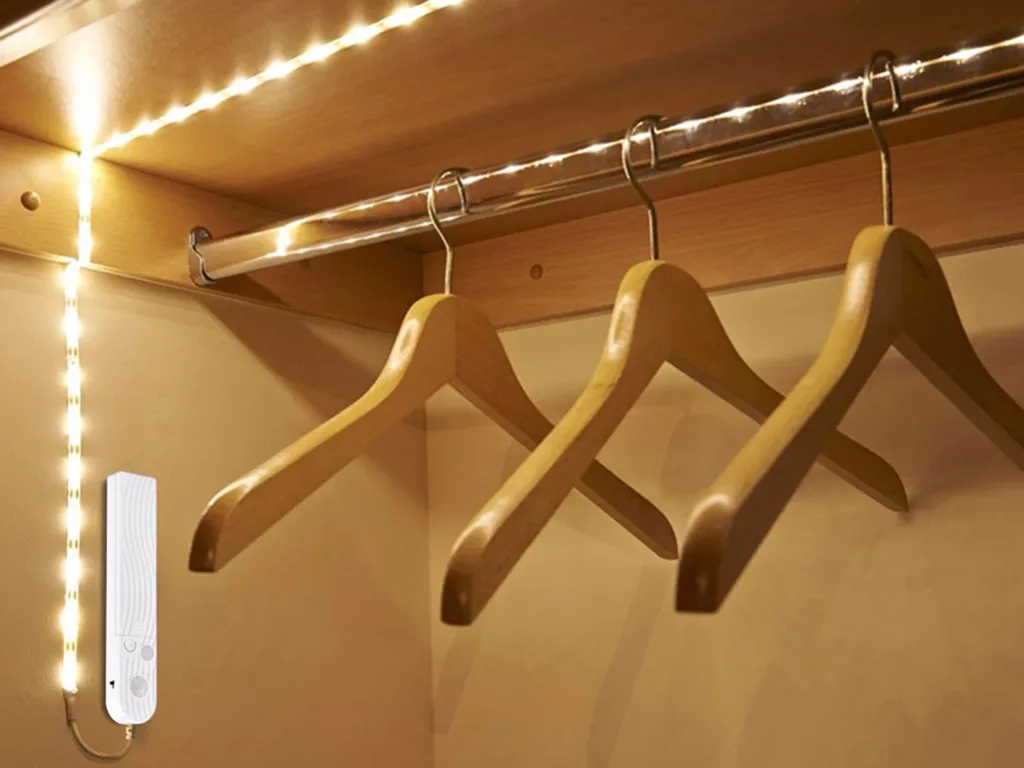
Because there are places where wiring and AC220V power is not easy. So, how to use LED strip lights without plug? At this point, using batteries as a power source becomes necessary.
For more information on how to use LED strip lights without plugs, click on the article.
Can I Use LED Strips Without Plugs?
LED strip lights have become a popular choice for decoration and lighting due to their…
Powering LED strip lights with batteries is ideal for scenarios where AC power is not available or practical. Common applications include emergency lighting and outdoor lighting in basements, under sink cabinets and closets, drawers, under cabinets, garages, campgrounds, and inside cars. When you choose the right batteries and set them up correctly, you can create a mobile lighting system that meets your specific needs.
Additionally, LED strip lights and batteries are two different components, but each is critical to your lighting installation. For example, if you use rechargeable batteries, your battery pack LED strip is environmentally friendly.
Which Battery Type Can Power LED Strip Lights?
There are various types of batteries on the market that can power LED strips, each with a different purpose. The type of battery you choose will have a direct impact on the performance and runtime of your LED strip. Typically, we use the 3 most common types of batteries on the market.
1.5V AA/AAA Alkaline Batteries
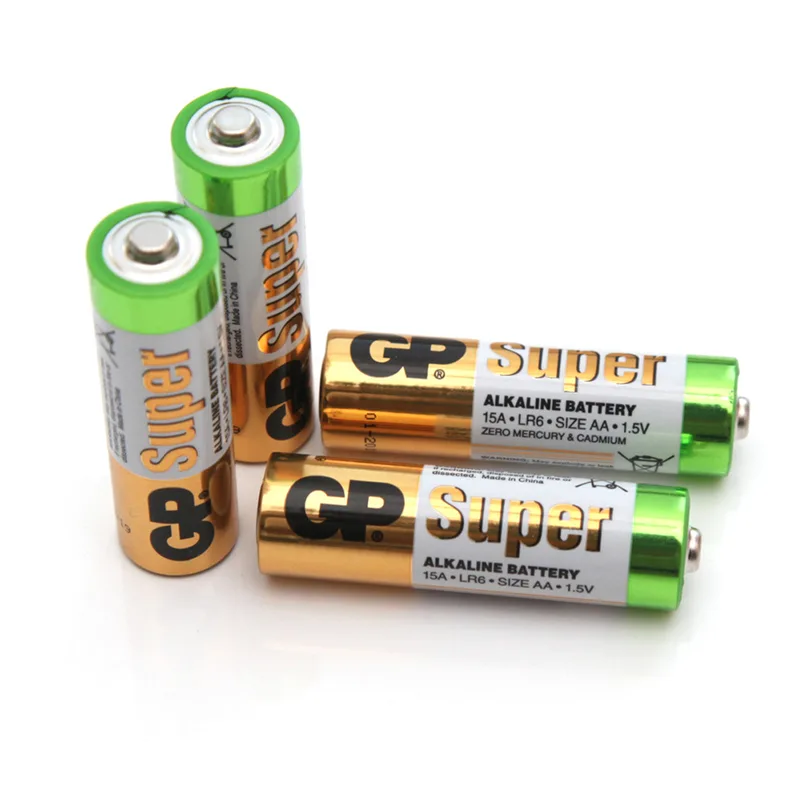
1.5V AA/AAA alkaline dry batteries are one of the most readily available types of batteries. They are inexpensive, easy to use, and can be easily purchased in supermarkets and convenience stores. AA/AAA alkaline dry cell batteries typically have an output voltage of 1.5V, and multiple dry cells can be connected in series to boost the voltage to meet the operating voltage requirements of LED light strips.
Due to their small size, AAA batteries have a capacity of only 1,000 mAh, while AA batteries can have a capacity of up to 3,000 mAh.
Since these 1.5V AA/AAA alkaline dry batteries need to be connected in series to boost the voltage, you will need to connect multiple AA/AAA batteries, and a battery box is an excellent choice. Multiple batteries can be mounted in series in a battery box.
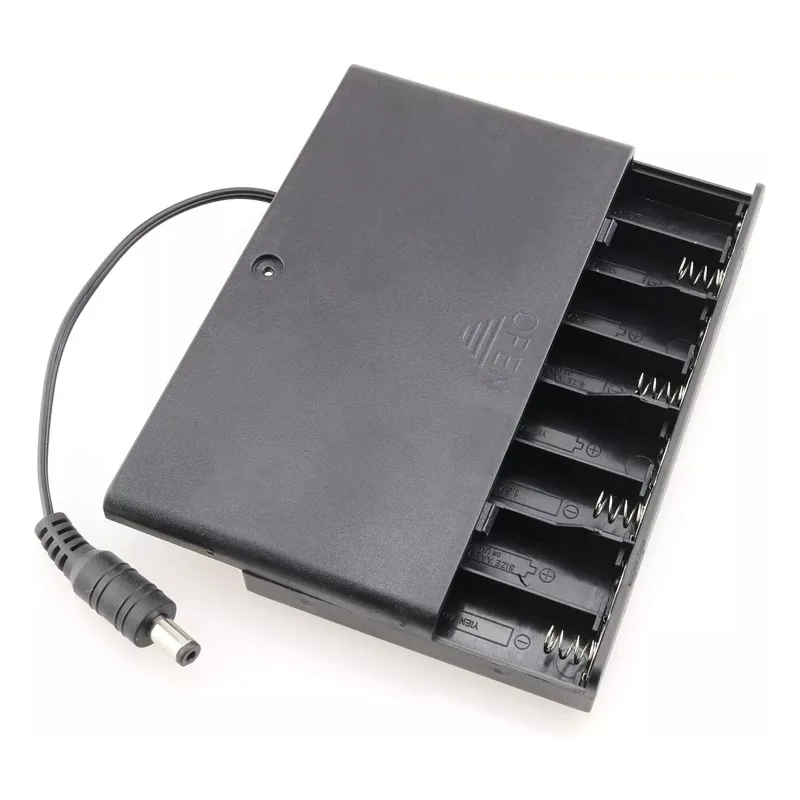
3.7V Rechargeable Batteries
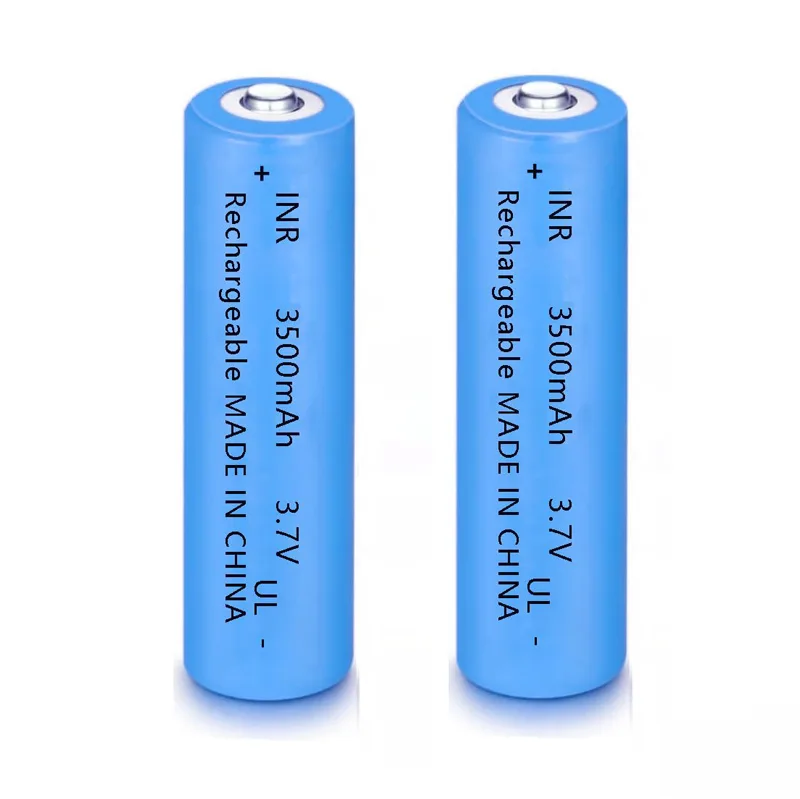
3.7V rechargeable batteries have high energy density, can be recharged and recycled, and are more environmentally friendly and economical than AA/AAA alkaline batteries. 3.7V rechargeable batteries, like dry batteries, can be connected in series through a battery box to achieve the desired voltage. Moreover, rechargeable batteries have a low self-discharge rate and can retain a certain amount of power when not in use for a long period of time. Its nominal capacity can be up to 3500 mAh.
12V Rechargeable Lithium Battery
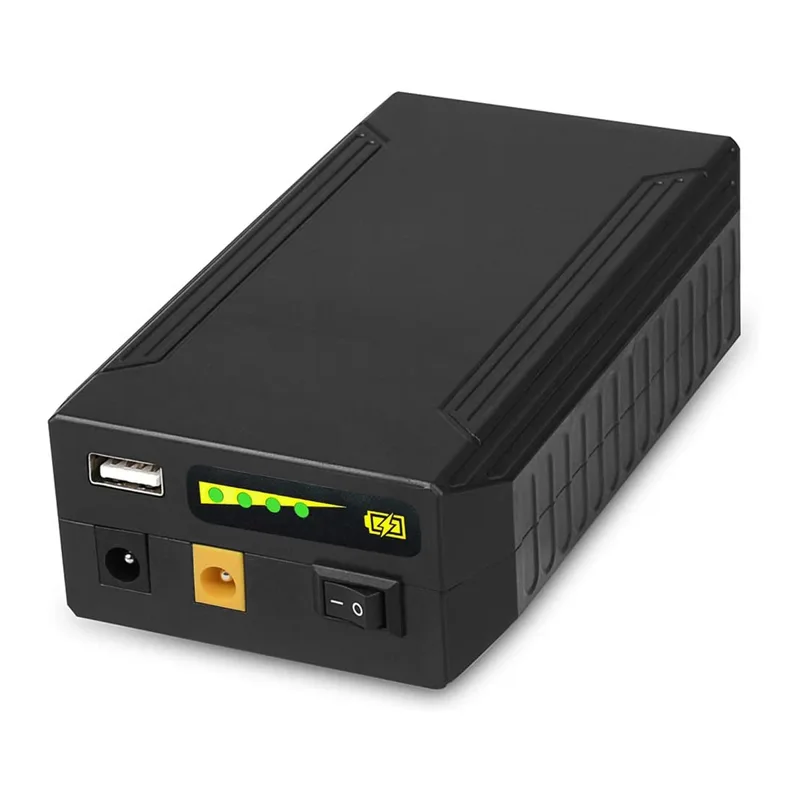
12V rechargeable lithium batteries are batteries that can be used in a wide range of electronic devices and have the highest storage capacity, fastest charging speeds, and highest efficiency of all 12V battery types.
They also have the longest lifespan compared to other battery types, even outlasting traditional lead-acid batteries by a factor of 3-5. Lithium-ion batteries are lighter and do not require the regular maintenance that other types of batteries do. Because lithium-ion batteries are sealed and do not require ventilation, they can be mounted anywhere in any orientation. This makes it ideal for use in mobile lighting applications. A 12V rechargeable lithium battery for LED light strips, which has a nominal capacity of up to 38,400 mAh.
How to Choose The Right LED Strip Light Battery?
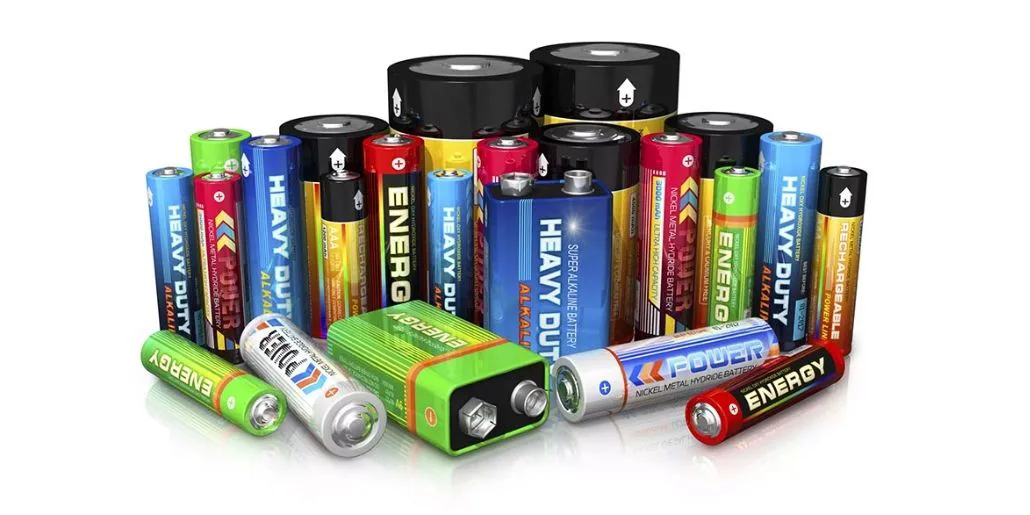
Choosing the right LED strip light battery requires consideration of the following key factors to ensure that the battery can meet the voltage and power requirements of the LED strip light, duration, connection, and usage environment.
Voltage Compatibility
LED strip lights usually operate at 5V, 12V, or 24V, and voltage compatibility is critical when choosing a battery. You need to make sure that the output voltage of your battery cannot exceed the operating voltage of the LED strip. Otherwise, it will permanently damage the LED strip. Conversely, if the voltage of the battery is insufficient, it will result in reduced or no brightness.
The output voltage of a single battery may not reach 12V or 24V, you can connect multiple batteries in series to obtain the required voltage for the LED strip. For example, for a 12V LED strip, you need to connect eight 1.5V AA batteries in series (1.5V x 8 = 12V). For a 24V LED strip, you can connect 2 x 12V lithium batteries in series (12V x 2 = 24V).
Battery Capacity and Runtime
The capacity of the battery needs to provide enough power to keep the LED strip bright and stable. Battery capacity is usually measured in milliamp hours (abbreviated as mAh) or amp hours (abbreviated as Ah). This value indicates the number of hours the battery can provide a specific amount of power (mA or A) before it runs out.
First, you need to calculate the total power and current of the LED strip. The power of LED strips is usually measured in W (watts)/meter, e.g., 12W/m. If you use a 5-meter strip, the total power is 12W/m x 5m = 60W.
Then divide the total power by the voltage to get the total current A. Multiply A by 1000 to convert to mA: 60W ÷ 12V = 5A, 5A × 1000 = 5000 mA.
Next, use the formula to calculate the running time: Battery capacity (mAh) ÷ LED strip power consumption (mA) = running time (hours). For example, a 12V rechargeable lithium battery with a nominal capacity of 38,400 mAh will run a 12W/m 12V LED strip for 38400 ÷ 5000 mA = 7.68 hours.
Capacity determines running time. Higher mAh value = longer running time. By estimating the battery runtime, you can plan accordingly and, if necessary, select a higher capacity battery or reduce the brightness to extend the LED strip runtime.
LED Strip Connecting to Battery or Battery Pack

Connecting LED strip lights to a battery pack is easy but requires careful attention to polarity and safe connections.
Another thing you need to make sure of is that the battery and LED strip connectors are compatible. Battery packs have either an open wire or DC connector for their output terminals; LED strips usually have either an open wire or DC connector. Proper wiring ensures smooth current flow and reduces the risk of short circuits or accidental disconnections.
Matching the Environment in Which it Will be Used
You should also note that you need to choose different batteries according to the environment or scenario of use. Below are some practical usage scenarios and recommended solutions:
| Scenarios | Recommended Solutions | Advantages |
| Camping Lighting | Lithium Polymer Battery Pack + 12V LED Strip + Dimmer Switch | Lightweight, 8-12 hours of battery life |
| Smart Home Ambient Lighting | Rechargeable 18650 Battery Pack + Sensing Module | Concealed installation, rechargeable, light up when you come |
| Outdoor Garden/Patio Decoration | Li-ion battery + Solar Panel + Controller | Low-cost, sustainable power supply |
| Children’s Room Decoration | AA Battery Pack + 5V Light Strip (with USB port) | Low voltage safety, plug and play |
View Our Battery Powered LED Strip Light Kits
Our motion sensor battery operated LED light strips are perfect for kitchens, cabinets, bedrooms, or any indoor application.
Even if there’s no electrical outlet nearby, the LED motion strip will bring decorative effect light into the darkest corners. Thanks to the compact battery compartment with four AAA batteries, the 1-meter strip can be used flexibly. The self-adhesive backing allows the tape to be quickly and easily attached to walls, furniture, or moving objects. The integrated motion detector automatically turns the strip on as soon as someone comes within 4 meters.
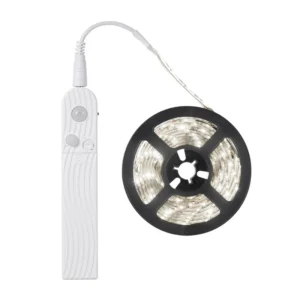
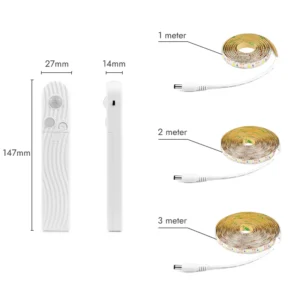
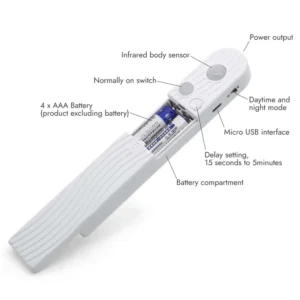



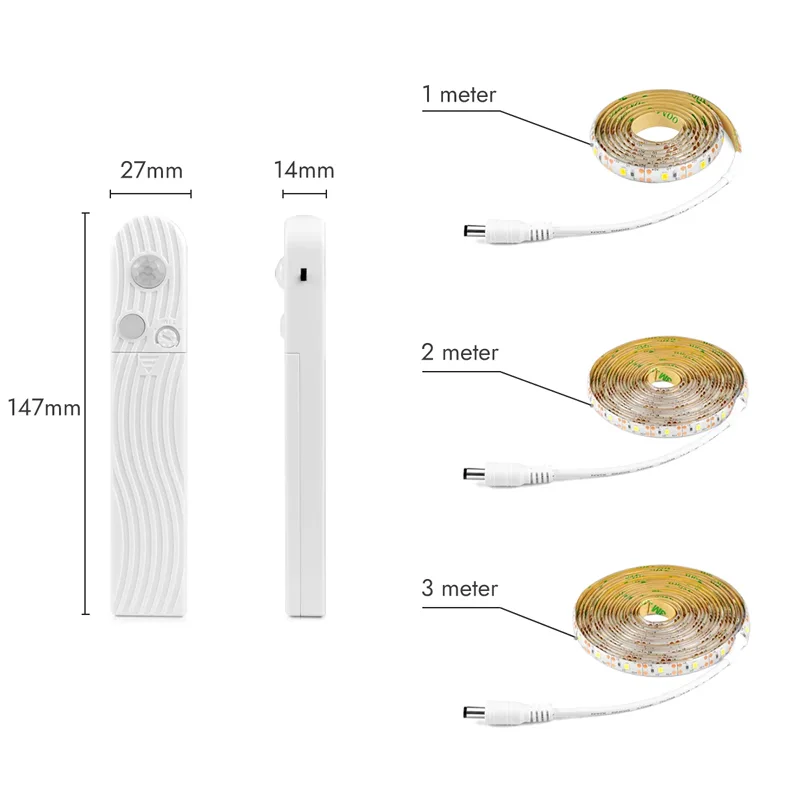
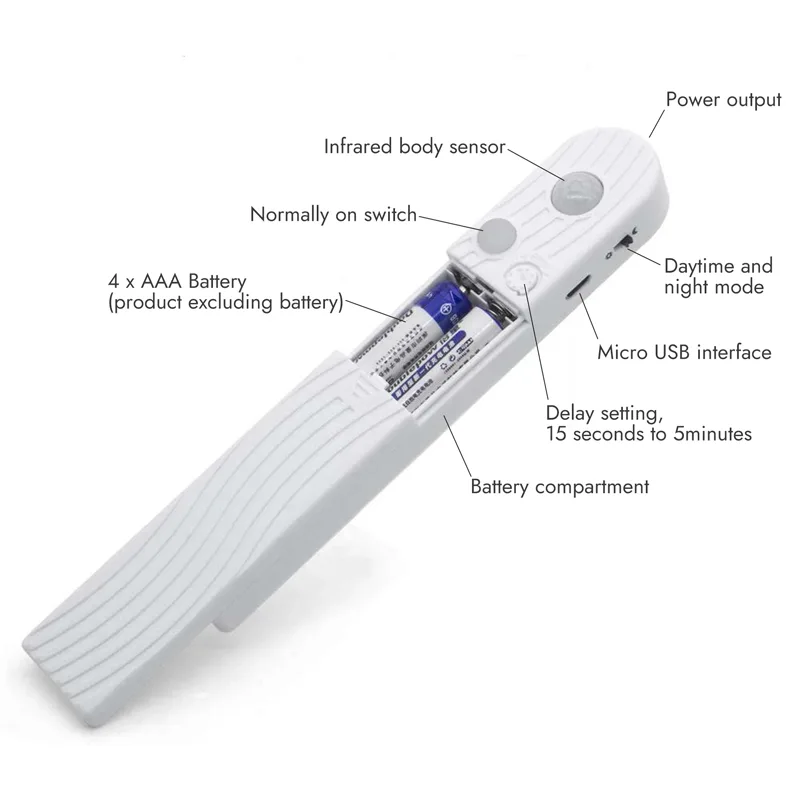
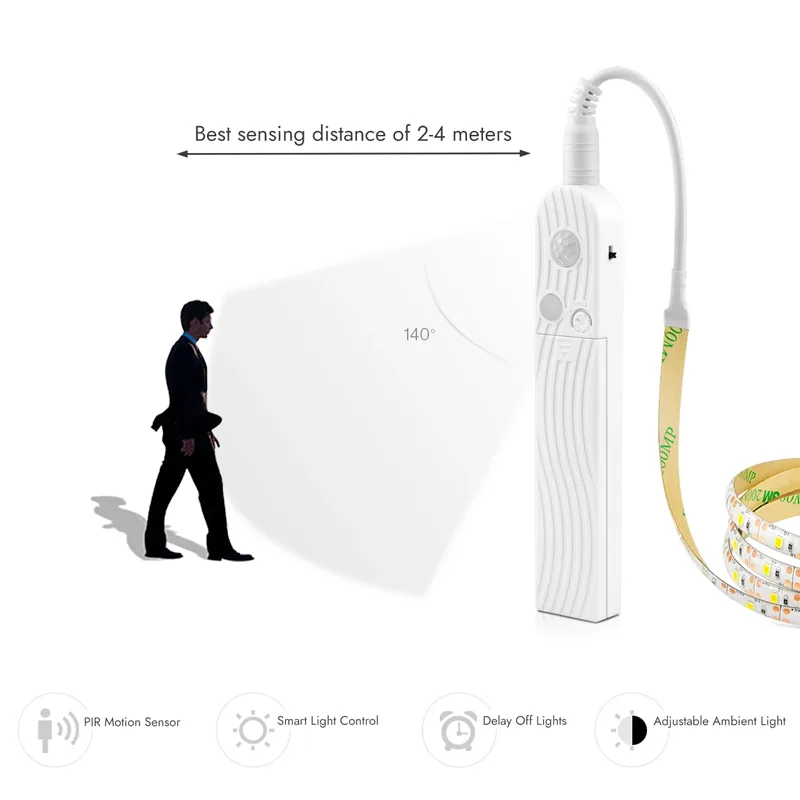
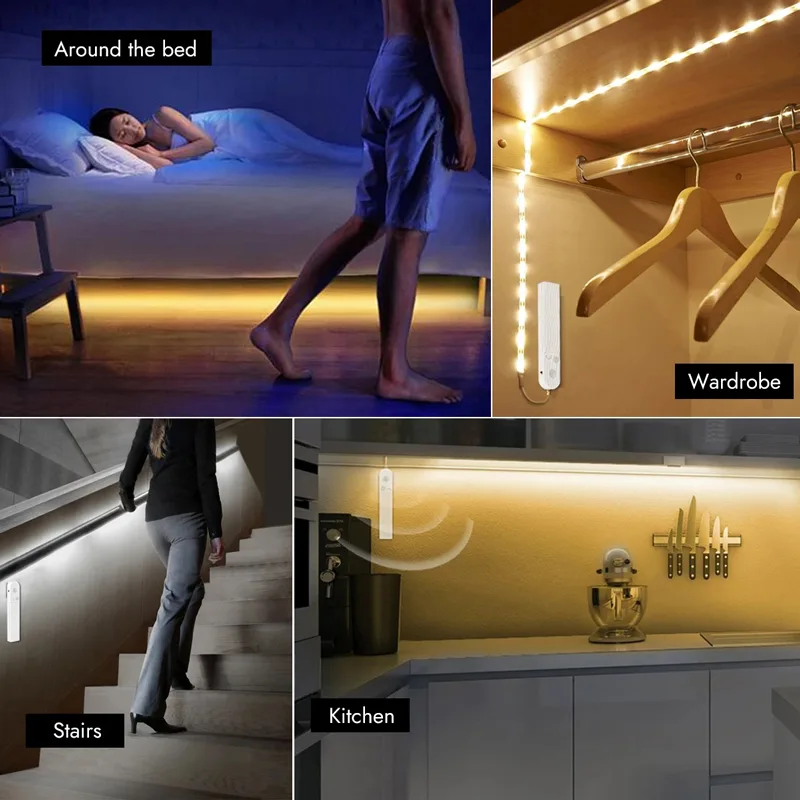
DC5V Motion Sensor Battery Powered LED Strip Lights
Model: FQX08T060F-BMS
LED Type: SMD2835
LED Qty: 60LEDs/m
PCB Width: 8mm
LED Strip Length: 1m/2m/3m
Cutting Length: 16.66mm, cuttable every 1 LED
Color Temperature: 2700K – 6500K
Ra: ≥80
Voltage: DC5V
Power: 6-8W/m
IP Grade: IP20/IP54/IP65
Warranty: 2 Years
Sensing Distance: 2m – 4m
Time-Delay: 15 sec-5 min (adjustable)
Light Control: 2 modes (Mode 1: Day and Night; Mode 2: Night)
Battery: 4XAAA Battery (not included)
Working Modes: When you press the button, the red light turns ON, and the LED strip will always keep the light ON; when you press the button again, the red light will be OFF; it will be “PIR” mode.
Package: 1 x LED Strip Lights, 1 x LED Motion Sensor Control Box
Price:
1 meter/set – USD $2.5-3
2 meter/set – USD $3-3.5
3 meter/set – USD $3.5-4
How Can I Extend The Life of The Battery?
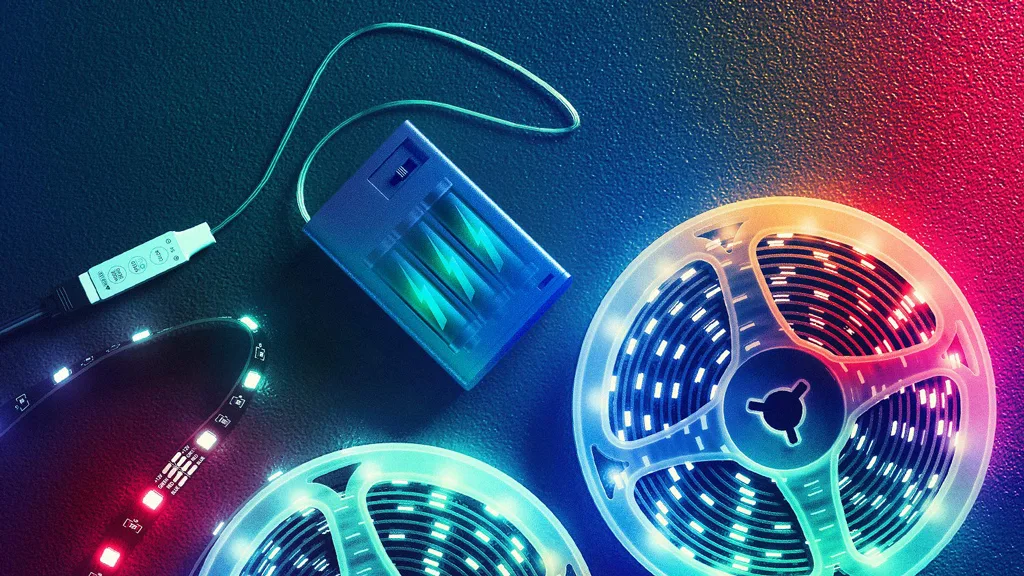
The batteries have a limited capacity and usually only last a few hours. When the battery dies, you can replace it or recharge it. However, knowing how to extend the life of the battery will not only help you save the cost of replacing the battery but also ensure that the LED light strip works stably for a long time. Here are some effective ways to extend battery life:
1. Add a Switch
You can add a switch between the LED strip and the battery and turn off the switch to cut off the battery power when you don’t need lighting. This saves energy and extends battery life.
2. Use a Dimmer
Do not drive the LED strip at very high brightness for a long time, as this will discharge the battery too quickly, leading to higher temperatures and affecting battery life. Sometimes, reducing the brightness of lighting in certain scenes can save power and extend battery life. So, you can add PWM dimmers to your batteries and LED strips to adjust the brightness of your LED strips.
3. Reduce LED Strips or Use Low-Power LED Strips
The longer the LED strip you use, the shorter the battery life. So, you need to re-evaluate whether you really need a very long LED strip, and you have to choose between the length of the LED strip and the battery life.
In addition, you can also use low-power and high-efficiency LED strips, so you can reduce power consumption and take into account the need for good light brightness.
4. Avoid Overcharging and Over-Discharging
For rechargeable batteries, prolonged overcharging and over-discharging (depletion to 0%) will lead to increased pressure inside the battery and shorten the battery life. Especially for lithium batteries, they should be recharged when discharged to 20%-30% to avoid waiting until they are completely discharged.
5. Avoid Extreme Use Environments
The operating temperature of the battery has a great impact on the life. If the battery is used for a long time in a high-temperature environment (such as direct sunlight or near a heat source), it will lead to increased chemical reactions and shorten its life. In a low-temperature environment, the battery discharge efficiency is reduced, and the battery capacity may be seriously reduced.
Precautions When Using Batteries to Power LED Strip Lights
When using batteries to power the LED strip lights, you need to pay attention to some important matters to ensure the safety, stability, and efficiency of the system.
1. Safety First
During the process of connecting the battery and LED light strip, always make sure to disconnect the power supply to avoid the danger of electric shock. At the same time, we should choose reliable quality batteries, wires, connectors, and protection components to prevent fire, short circuits, and other safety accidents caused by product quality problems. For lithium batteries, special attention should be paid to their use and charging specifications to avoid overcharging, over-discharging, and short-circuiting so as not to cause serious consequences such as battery explosion.
2. Reasonable Planning Power
According to the power and expected use time of the LED strip, reasonably select the type and number of batteries to ensure that the batteries can provide enough power. If the power is insufficient, the LED strip may have reduced brightness, flickering, etc., affecting the use of the effect. At the same time, pay attention to the remaining power of the battery and replace or charge it in time to avoid sudden power failure during use.
3. Prevent Overheating
In the process of use, the LED strip and the battery will generate a certain amount of heat. Make sure the installation environment is well ventilated; avoid using it in a closed, high-temperature environment to prevent overheating, shorten the life of the LED strip, degrade battery performance, and even cause safety accidents. If you find that the LED strip or battery is overheated, stop using it immediately, check the cause, and take appropriate heat dissipation measures.
4. Regular Inspection and Maintenance
Regularly check the status of the battery, wires, connectors, and LED strip to see if there is any looseness, damage, aging, etc. Replace damaged parts in time to ensure that the LED strip is in good condition. Replace damaged parts in time to ensure the stable operation of the whole power supply system. For rechargeable batteries, charge them in accordance with the correct charging method, and regularly carry out deep charging and discharging to maintain the good performance of the batteries.
FAQ
This is a simple process that anyone can do.
Step 1: First, locate the positive and negative terminals on the battery. There will be a plus sign (+) next to the positive terminal and a minus sign (-) next to the negative terminal.
Step 2: Locate the corresponding terminals on the LED strip; the positive terminal on the LED strip will be labeled with a plus sign, (+) and the negative terminal will be labeled with a minus sign (-).
Step 3: Once you have found the correct terminals, connect the positive terminal of the battery to the positive terminal of the LED strip, and then connect the negative terminal of the battery to the negative terminal of the LED strip.
You will need the following items: an RGB strip, batteries, and a controller.
Step 1: Connect the controller and battery. First, you will need to connect the positive terminal of the controller to the positive terminal of the battery. Next, connect the negative terminal of the controller to the negative terminal of the battery.
Step 2: Connect the RGB LED strip to the controller. You can clearly see the markings on the controller: V+, R, G, and B. Simply connect the corresponding RGB cables to these terminals.
Insert the battery pack into the charger and make sure the charger is plugged into the wall. Empty battery packs take eight hours to fully charge, so plan ahead!
Yes, you can; just make sure the voltage of the batteries is compatible with the voltage of the LED strip.
If you plan to use batteries to light the Sensor Cabinet Light on a regular basis, the best option is to use rechargeable batteries. This way, you won’t have to replace and charge the batteries.
Yes. 12V LED strips can operate at lower voltages than they require but will be less bright. However, it should be noted that if the battery voltage is higher than the LED strip voltage, the LED strip will be permanently damaged.
A car battery is 12.6 volts or higher when fully charged. If the engine is running, the voltage will rise to 13.7 to 14.7 volts and drop to 11 volts when the battery is depleted. Due to the lack of stability, it is never a good idea to power a 12V LED strip directly from the car battery. Doing so will cause the strip to overheat and shorten its life.
Therefore, you cannot connect them directly but need a voltage regulator. Since you need 12V to run the LED strips, using a regulator will reduce the 14V battery voltage to 12V, making the LED strips safer. However, there is a problem. Whenever your car’s battery voltage drops, the brightness of the LEDs may drop.
A car battery has enough juice to power a typical car strip for more than 50 hours until it runs out of juice.
Many factors can accelerate the loss of battery power, such as too many LEDs or the use of high-power LEDs, but typically it is unlikely to drain your car battery even if you leave it overnight.
LED strips are safe when installed and used correctly, whether they are LED-powered or battery-powered.
Please be careful not to use higher voltages to power the LED strip, as this can damage the LED strip or even cause a fire.
Yes, you can use a mobile power supply to power LED lights. But you need to make sure that the voltage of the mobile power is compatible with the voltage of the LED strip.
The best battery for LED light strips is a lithium-ion polymer battery. These batteries have a high energy density, which means they can store more power per unit of volume. In addition, these batteries last longer than other types of batteries.
Conclusion
In conclusion, you can use batteries to power LED light strips. This can be done simply by connecting the positive and negative wires of the LED strip to the positive and negative terminals of the battery. However, it is important to note that you need to use the correct type of battery so that the LED strip and the battery do not overheat and catch fire.
Battery powered LED strips are a great solution for creative lighting projects, portable installations, and temporary installations. By choosing the right type of battery, calculating power requirements, and following safe wiring practices, you can enjoy flexible lighting anywhere.
